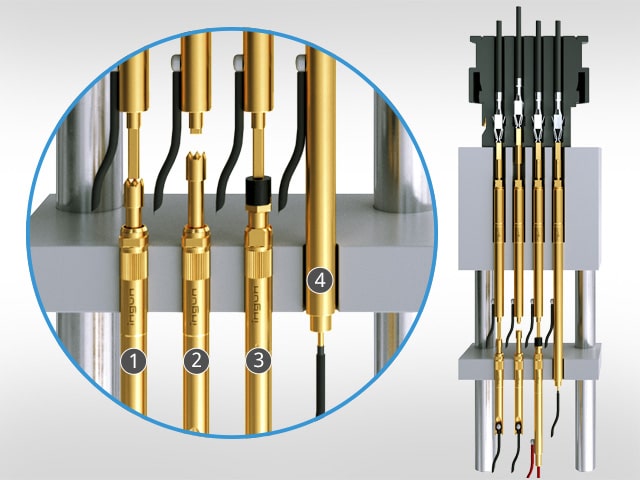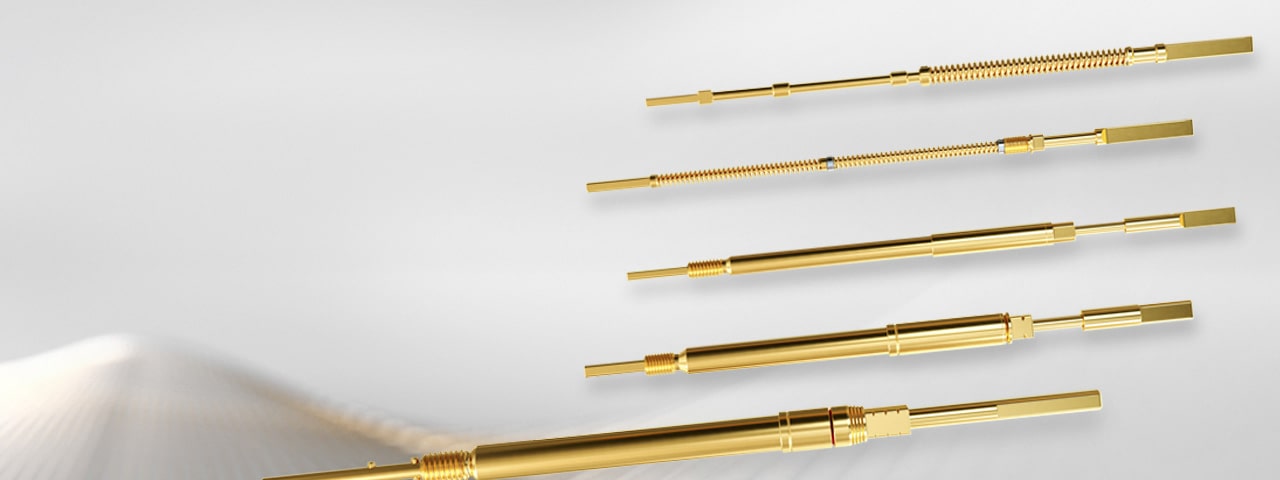PRODUCTS
When fitting the plug connector, it is not only important that the contact lamellae in the plug or plug connector are in the correct position, but also that they stay fixed in this position. Push-back probes (VF) with spring forces up to 34 N are used for this test.
Depending on the size of the connectors to be tested, various push-back probes are available: The smallest have a pitch distance of 2.54 mm (100 mil), the largest can be used in 5.00 mm (200 mil) grids.
Various installation methods possible
The push-back probes are usually mounted in test modules in cable test tables and have a continuous plunger. During the test, the push-back probe is pressed against the contact lamellae in the connector. If the contact lamellae remain in the correct position, the plunger performs a downward stroke movement. This creates contact with a switch receptacle, spring-loaded test probe or switching probe (SKS) mounted underneath. This procedure ascertains whether the contact lamellae are in the correct position. In combination with the switching probe with plastic insulating tip style 002, voltage-free tests are possible.
Advantages of the switch receptacle
- When using a switch receptacle, one level in the test module can be saved, therefore reducing costs.
- Furthermore, switch receptacles are available with or without knurl. Receptacles with knurl ensure a particularly secure hold in the test module.

The various installation options for push-back probes (from left to right):
- with standard test probe (GKS);
- with switching probe (SKS);
- with SKS with insulated plunger tip;
- with switch receptacle

